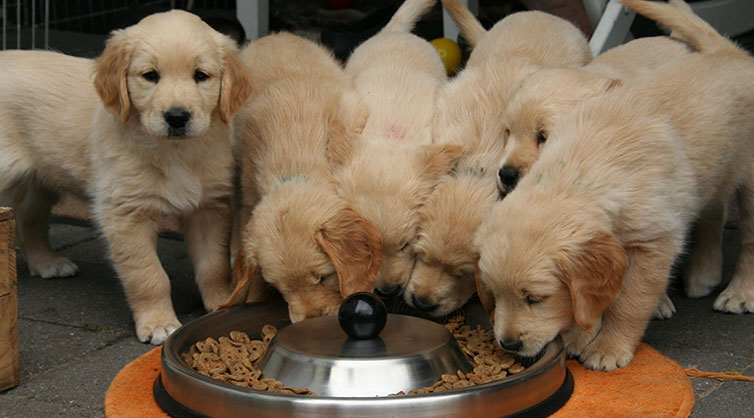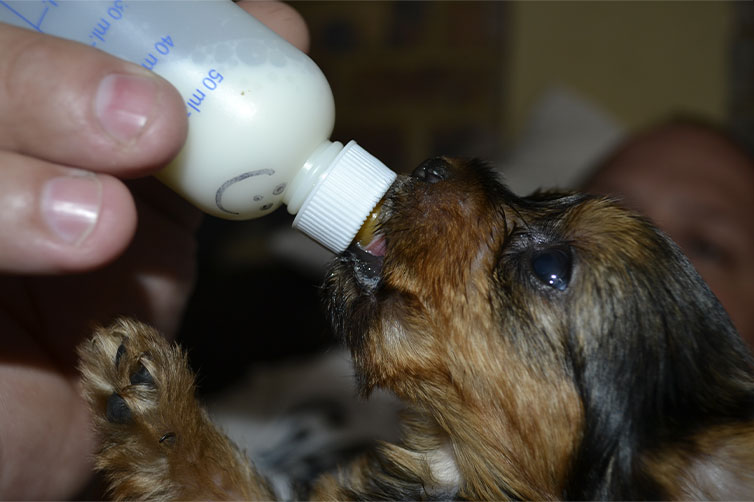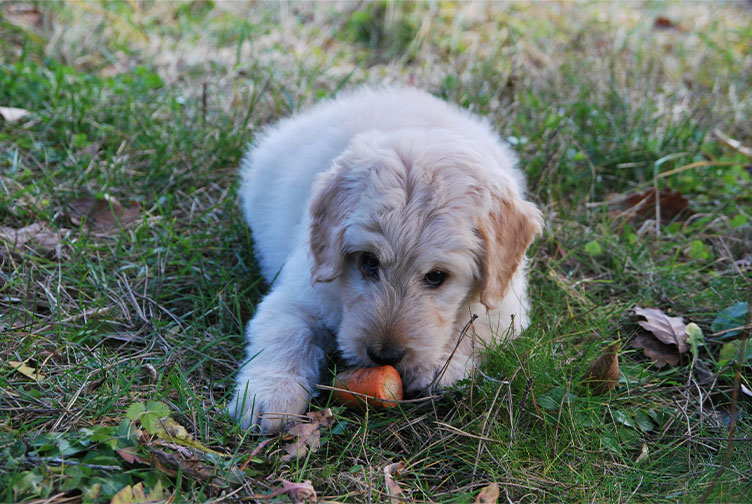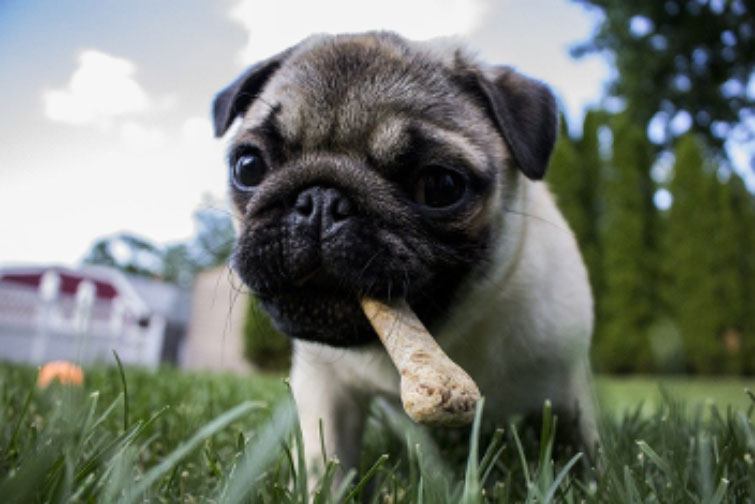What to Feed a Puppy: The Do’s and Don’ts
Are you welcoming your first furry bundle of joy soon? At a loss for what to feed a puppy? Read on to learn more about puppy feeding do’s and don’ts.
DOG HEALTH

Posted by bravectosouthafrica – 14 October 2020
What to Feed a Puppy and When
For the initial stages of their life, puppies should consume special food, designed to help them grow big and strong. A puppy’s specific dietary needs can depend on factors such as their breed, size and age. First-time puppy owners may feel overwhelmed by the sheer variety of puppy foods available on the market nowadays. Don’t worry – Bravecto® is here to give you guidelines on what to feed your pup and when, as well as what not to feed them and more!
Please keep in mind that each puppy is different. If you have any specific questions or concerns regarding their dietary needs or feeding schedule, be sure to reach out to your trusted veterinarian or the breeder you got them from. These people are there to assist you in ensuring your puppy grows up happy and healthy. It’s generally a good idea to find out what your puppy was fed at the breeder, rescue or foster home you got them from and then either continue feeding them that or slowly transition them onto a new brand of puppy food.
A good brand of puppy food is balanced. Its formula tends to contain the following nutrients:
- Enough protein – Important for supporting developing muscles
- Carbohydrates – To give your puppy enough energy to maintain an active and playful lifestyle
- Calcium – To ensure your puppy develops strong teeth and bones
- DHA – Necessary to support the healthy development of your puppy’s brain and vision
Your Puppy’s First Year
By the time you bring your new pup home, they are hopefully weaned off their mother and should be able to consume solid food. The amount of food, as well as how frequently you feed them, will change throughout their first year of life.

Newborn Puppies
Puppies that are able to stay with their mother for the first 6-8 weeks of life get all the nutrition they need, plus valuable antibodies that help strengthen the immune system, from their mother’s milk.
Sometimes a mother dog will reject her litter, be unable to produce enough milk or is simply not in the picture anymore. Whatever the reason, feeding the puppies will fall to you. If you find yourself in this situation, speak to your vet about suitable, high-quality canine milk replacers and bottles designed especially for feeding orphaned pups.
Don’t feed the puppies cow’s milk or another milk replacement, as these may cause diarrhoea. Have your vet show you how to safely bottle-feed the newborns, as doing so incorrectly may lead to harm. You will need to feed the pups every few hours for a couple of weeks. Learn more about caring for a newborn puppy by reading Fetch by WebMD’s article on ‘Caring for a Newborn Puppy.’

Puppies Aged Between 6-12 Weeks
The rapidly growing puppy should be given puppy food that’s specially formulated to meet their nutritional needs, ensuring they reach all their developmental milestones. When you feed your puppy adult dog food, you end up denying them crucial nutrients.
Weaning puppies off a liquid-based diet should happen gradually, not instantly. For puppies in the 4-6 week old age bracket, Cesar’s Way recommends you start gradually introducing them to puppy food by preparing a gruel. Make it from blended up puppy food and milk replacer, then offer it to them 3-4 times per day. Start to gradually reduce the amount of liquid used to prepare the gruel. This will make adjusting to solid food easier and minimise the risk of them developing an upset stomach.
Feeding your puppy four times per day at the 6-12 weeks old stage should be enough to meet their nutritional needs. If you own a large breed puppy, you should start feeding them unmoistened, dry puppy food at around 9-10 weeks old. Small breed puppies should go on a dry food diet by 12-13 weeks old.
Puppies Aged Between 3-6 Months
When your precious pup reaches between 3-6 months of age, you should start looking into decreasing their daily feedings from four to three times.
A puppy of about 12 weeks old should start looking less potbellied and pudgy. If, however, your puppy is still a little on the chubby side at this stage, don’t fret. All you need to do is continue feeding them puppy-sized portions until their body shape/type has matured.
Puppies Aged Between 6-12 Months
Puppies between the ages of 6-12 months old should start eating only two meals per day. As soon as they’ve been spayed or neutered, your puppy’s energy requirements will decrease. This means you may have to switch over from nutrient-rich puppy food to adult maintenance food. Small dog breeds can usually make the transition from puppy to adult food at around 7-9 months old. A bigger dog breed will take a little longer to outgrow their puppy food and may only start to move over to adult food when they are 12-14 months of age.
Do keep in mind that it’s better for your dog to remain on puppy food for a little while longer, than changing their diet too quickly. Speak to your vet if you’re at all unsure of when to make the final switch.
Dogs Over One Year Old
Most dog owners will start feeding their now adult dog two half-portions daily.
Premium Puppy Food – Is It Worth It?
You get what you pay for. As puppies have higher nutritional and caloric needs than full-grown dogs, the puppy food you choose should be of high quality. A more expensive brand of puppy food will most likely contain a higher nutritional density. This means that you’ll be able to give your puppy less, to achieve the same effect. Another benefit of premium puppy food is that its ingredient profiles are stable. On the other hand, cheaper brands of dog food may not always have a stable composition, so batches can vary greatly.
Most of the big dog food brands make sure to invest plenty of time into continuously improving their formulas, to offer your dog the most health benefits possible.
How Much to Feed a Puppy per Day
Puppies require much more calories than a mature, adult dog as they still have a lot of growing to do. Most of the commercial dog food brands have a puppy feeding chart on their packaging. These can be used as a guideline for your dog, as they indicate the recommended portion size you should feed a puppy, based on age and weight. You may need to adjust this as your puppy grows. If you’re unsure how, speak to your vet.
In the end, it’s all about body condition when it comes to determining how much to feed your pup and not the amount of food they eat or leave over in their bowl. True portion size has to do with a dog’s individual metabolism, as well as their body type and nutritional needs.
Puppies that occasionally skip or leave food over after a meal shouldn’t be cause for concern. It may merely be an indication that they are ready to eliminate one of their meals or that you’ve given them too much food, in which case you simply have to reduce their portion size.
If you reward your pup with treats during training, then you may also need to adjust their portion sizes come mealtime. Be sure to keep treats as small as possible. For a healthy alternative, you can give your pup small portions of apple, carrot, bell pepper or green bean chunks as a low-calorie, healthy snack with plenty of crunch.

Foods to Avoid Feeding Dogs of All Ages
We understand you can be tempted to feed your puppy treats from your table, but these can be harmful or even fatal. Avoid feeding your pup any of the following:
- Chocolate
- Avocados
- Raisins
- Grapes
- Macadamia nuts
- Raw dough, containing yeast
- Onions
- Garlic
- Chives
- Large quantities of dairy products like milk and cheese
- Alcohol
- Caffeinated products like coffee
- Salty foods like potato chips
- Anything sweetened with xylitol (e.g. baked goods and candies)
- Bones of any kind as they can splinter into shards and seriously injury your dog or may even prove fatal
Also, make sure to avoid buying a puppy and/or dog food where meat isn’t listed as the primary ingredient and is, instead, something like a meat by-product or maize.

Keep Your Pup Happy and Healthy Throughout Their Life
Dogs of all ages and backgrounds can become the target of nasty ticks, fleas and mites. Prevent your puppy from becoming a parasite’s next meal by treating them with either a Bravecto® Chew or Bravecto® Spot-On for Dogs when they are 8+ weeks old and over 2kg. Feeding your puppy a single Chew will keep them safe against fleas and ticks for 12 weeks, while the topical treatment will keep them protected against ticks for 4 months and against fleas for 6 months in only one dose!
You can show how much you love your pup by choosing Bravecto® for fast-acting and long-lasting parasite protection.
Subscribe to our Newsletter
Get to know your furry friend better! Sign up for all things dog- or cat-related.
The Hairy Facts about the dreaded hairball
12 April 2021
Help! My dog’s barking mad! Volume 2
12 April 2021
Your Itchy, Scratchy Cat – All About Cat Skin Problems
12 April 2021
The Dog’s Diet: A Bone of contention?
01 April 2021
Mango Fly Worms: How to Spot and Eliminate them
Posted on November 28,2019
Managing Mange And Mites In Your Dog
Posted on June 11,2018
Why Do Cats Purr and How? Learn What Your Cat Is Saying
Posted on October 14,2020
How to Get Rid of Ear Mites in Dogs
Posted on November 06,2019









